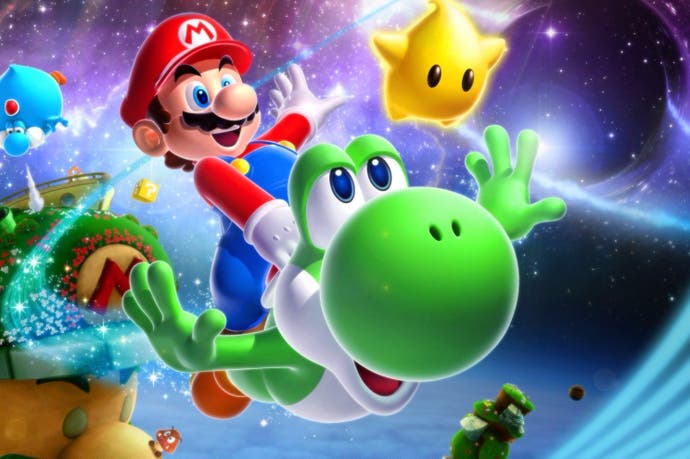In Theory: Could NX bring Wii and GameCube games to Virtual Console?
Emulation tests on Nvidia Tegra hardware show promising results.
News of Nintendo's NX has taken the spotlight this week, with sources pointing to a mobile device that interfaces with a game dock for your HDTV. Inside, the NX is based on Nvidia's Tegra mobile technology. It's a big departure from the IBM PowerPC architecture of its last three machines, raising questions over how NX's compatibility with older games will be handled going forward.
Until now, Nintendo has been diligent in bringing a strong legacy of titles to each new platform. It began in earnest with the Wii, via the Virtual Console for NES, SNES and N64 titles - but also with true, native hardware support for GameCube titles. This ability to tap into past glories boiled down to a common through-line in technology, one that stubbornly persists to this day with Wii U. From Gekko to Broadway to Espresso, the trend of iterating on the same PowerPC core gave Nintendo a link to the past, each time boosting the chipset's clock speeds over the last, and by the end, adding multi-core support.
The shift to Nvidia's Tegra means that this form of native backward compatibility is no longer an option. It's a clean break in technology and one that's been 15 years in the running. The notion of a second internal processor for backward compatibility - as seen in PlayStation 2 and initial PS3 models - is also highly unlikely, bearing in mind the NX's portable, power efficient nature. So the bad news is that running library titles using original silicon is off the table, but there is another option. Tests we've run this week suggest that the Nvidia chipset may well have the horsepower to bring many of these titles to life on NX using a next-gen iteration of its Virtual Console emulation technology.
Effectively, pure emulation is the only viable solution. Whether NX ends up using the Tegra X1 or a newer, potentially Pascal-based X2, it's clear that the power is very much in hand to simulate these older machines. And we can demonstrate this to a certain extent right now, using the unofficial Dolphin emulator in its Android guise, running on Nvidia's Shield TV console. We tested a clutch of Nintendo's best games for GameCube and Wii, and came away impressed with the playback bearing in mind this version of the emulator's highly experimental nature. It's far from guaranteed this method will come to pass on NX, but as an initial proof of concept, these tests are compelling.
Our first test is Mario Sunshine; a 30fps game by design that gives a glowing first impression. After tinkering and swapping around with Dolphin builds (eventually landing on version 7599), we have this game running at playable speeds on the Nvidia Shield Android TV - with all its visuals intact. Of course, if Nintendo were to pursue the emulation route, we should expect much better results - it won't be using Android as the OS, it'll have better access to the core Tegra hardware and of course, it knows the original hardware inside and out.
However, in terms of showing the raw power of Tegra X1, the results are promising, and Mario Sunshine already runs between 22-30fps all the way through its opening levels. The original's cap at 30fps is enforced through emulation too, but it's worth noting that the use of Android OS in this case causes frame-time issues with this cap (fluctuating between 16.7ms and 50ms). However, outside of the busy Delfino square area, which accounts for its lowest drops, most gameplay sticks closely to that 30fps ceiling.
Encouragingly, there's very little in the way of a performance hit when playing at full 1080p, which barely clocks a 1fps difference compared to a native 480p run. It suggests we're more bottlenecked on the Nvidia Shield's CPU for when drops do occur, and in this case there's no real penalty to enjoying Mario Sunshine at full HD. Either way, early signs show the ballpark performance is already in place, if Nintendo wanted to pursue the emulation strategy.
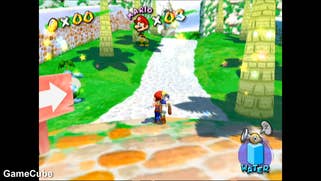
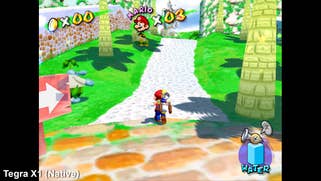
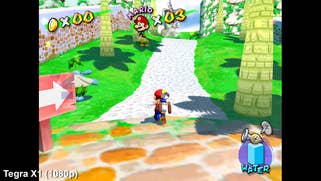
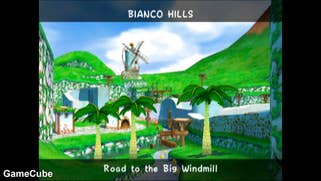
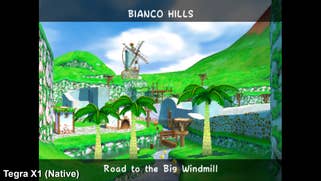
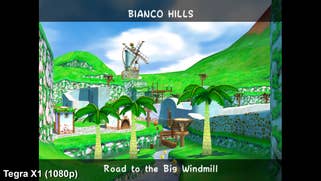




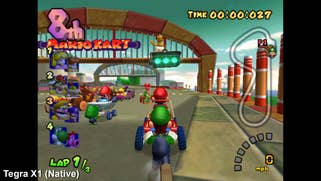

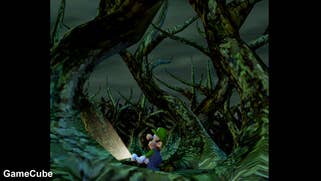
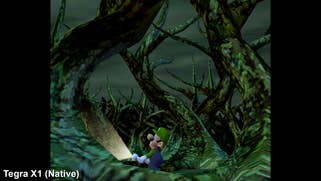

As an emulation proof of concept, it's a great result, showing Nintendo has scope to improve visuals too with art styles in both Mario Sunshine and Luigi's Mansion holding up beautifully at 1080p. However, whether or not it's technically possible, this res bump is unlikely to happen in an official capacity, given Nintendo's reticence in changing the original resolutions and frame-rates of older games. Based on previous experiences with its Virtual Console, we're more likely to see GameCube games run at a plain, native 480p, should they ever be revisited on NX.
Next up, we push the boat out on the Tegra X1 with a full 60fps title: Mario Kart Double Dash. In its original GameCube form this rarely misses a beat, while our emulated Tegra X1 test gets us within the region of the original's performance, at around 50fps. It's a gap we could see Nintendo bridge on NX with all the additional advantages it has available in terms of hardware access, but when it comes to 1080p performance, this is where we do see a clear GPU-side bottleneck. In that case we're lucky to hold 30fps, and as gameplay actually slows with the frame-rate, the game is unplayable at full HD.
As a test case, Double Dash runs well enough on the Shield Android TV at native res to prove the point. Even with an unofficial emulator, it reveals it's within the grasp of Nintendo's newer machine, even in the scenario that it uses a Tegra X1. However, these are games from three generations prior to its intended hardware, leading us to wonder how Wii titles could fare. In moving to Wii emulation on the Shield TV, we had far more trouble getting games to work properly, with more crashes and bugs en route. And there's also the fact that more is being asked of the emulator - while based on the same architecture, the Wii's CPU and GPU both saw a 50 per cent increase in clocks compared to its predecessor.

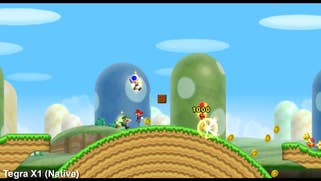

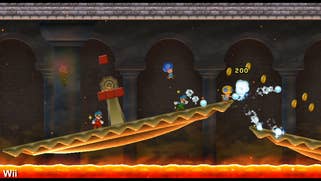
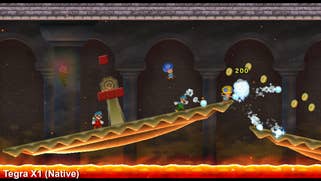

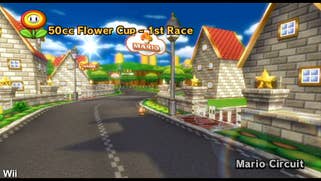
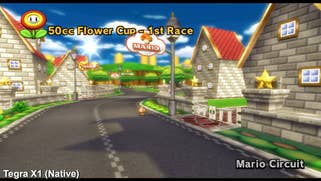
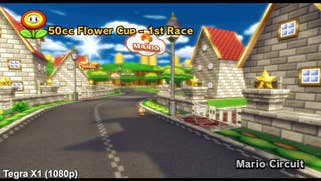
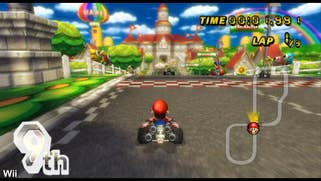
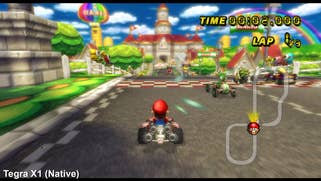
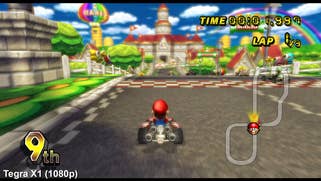
Despite the technical issues, we did break through with a brace of titles. The first is New Super Mario Bros for Wii., a visually simplistic title overall, but one where single-player gets close to the 60fps line occupied by the original Wii. But with four characters on screen, the game does starts to struggle on the Tegra X1, at around 40 to 50fps across the board. Much like Mario Sunshine though, the resolution really doesn't matter in playback this time - you can have it set at native 480p or 1080p, and it still gives the same ballpark values.
As an early indication it's promising. If the Tegra X1 is this close to playing Wii games at 60fps without any official involvement, there's a case to be made Nintendo can make it work to a higher standard for NX. We had a shot at running the more demanding Mario Kart for Wii as well, but with less favourable 20-40fps returns in that case. Ultimately though, getting any of these titles running on a Shield TV involves lots of trial and error with Dolphin builds, demonstrating the experimental, work-in-progress nature of the emulator.
Of course, any potential 'next-gen' Virtual Console emulator for Wii and GameCube would be built from the ground up by Nintendo itself, more fully exploiting the Tegra hardware, and designed with a far greater understanding of the original consoles. Factoring all that in, we'd say that there's a very good chance that, while the hardware link all the way back to the 2001 GameCube technology might finally have been severed, Nintendo still has the raw horsepower available to bring Wii and GC games to NX.
As for support of Wii U games, we'll have to see what unfolds when Nintendo announces the NX in full. In theory, porting the best of Wii U's catalogue may be a better option than trying to emulate that machine outright - a more complex multi-core console than its predecessors, made trickier by its Radeon GPU - not to mention its GamePad component. Enhanced NX ports of games like Super Smash Bros for Wii U, Mario Maker and Splatoon may be the solution here - fresh versions for a new generation, giving each more exposure than they received at first.
